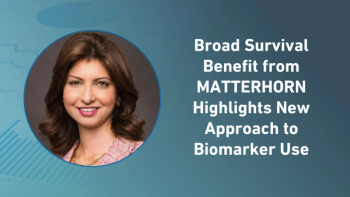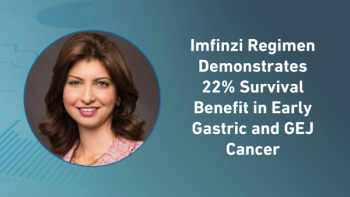
- Applied Clinical Trials-12-01-2018
- Volume 27
- Issue 12
Patients as Partners in the API Era
The availability of FHIR-based APIs enabling patients to access and use their healthcare data for multiple purposes has opened a door to an entirely new world of opportunities for partnering with patients on clinical studies.
In the world of regulated research, we’re conditioned to do things the same way, over and over again, to conform with SOPs. With respect to clinical studies, patients are anonymous “subjects,” and we’re enslaved to the case report file (CRF), designing studies to collect a set of data entered into EDC systems and moved along a complex, often recursive chain through data management, analysis, and interpretation. It’s not easy to exercise creativity in trials, because we can be punished severely if we stray from the tried-and-true path.
Historically, all this made sense, since medical records were generally in paper folders, stored in massive mechanical file systems. To make the data usable, we relied on coordinators to copy the data into the CRFs, recognizing the need to scrutinize every data point because of the likelihood of transcription or omission errors.
Even when electronic medical records (EMRs) became available at sites, there wasn’t much of a change to the transcription process. In some cases, researchers learned to tap into an electronic health record (EHR) system for source data verification, and risk-based monitoring tempered the monitoring burden somewhat. But in research, it still all started and ended with the CRF. And it generally seemed easier to just copy the data into EDC, rather than confront the complex challenges of trying to load it in electronically from EHR systems.
But while research labors on, the world of digital healthcare has been transformed. The U.S. 21st Century Cures Act established a requirement for certified EHRs to allow patients to access their data “without special effort” and “without the requirement for vendor-specific interfaces” by 2019. This requirement has become realistically attainable with HL7® FHIR®.
As Don Rucker, National Coordinator for Health IT, noted in a Health Information Technology (ONC) blog, “Open and accessible APIs (application programming interfaces) have transformed many industries. We think they can transform healthcare as well.” A more recent ONC blog from Steve Posnack has shown how healthcare is already poised to capitalize on the era of APIs. In his recent celebrated New Yorker article, Atul Gawande has identified targeted apps built on APIs as a critical tool to lessen the EHR burden on clinicians, by allowing medical staff to “pick and choose the apps according to their needs.” And if this is happening in healthcare, why can’t this be the case for subjects, investigators, and research professionals? The SMART on FHIR (Fast Healthcare Interoperability Resources) app store provides a tangible glimpse into what apps built on FHIR APIs could also do for research.
But while HL7 FHIR has made this possible, it still requires a committed effort to make it happen. Within the healthcare industry, the Argonaut Project paved a path for engaging multiple stakeholders (providers, IT vendors, and consultants) to work together on a common implementation guide for using patient-focused APIs. This approach has been repeated by the Da Vinci project, involving a similar collaboration of participants plus payers to use clinical data to support value-based care. Da Vinci has also taken a lead in implementing the FHIR Bulk Data capability to use APIs to access data for entire populations of patients-a use case that could be adapted to improve pharmacovigilance and other research use cases as well.
One significant example of how APIs can help to partner with patients is the NIH All of Us Research Program, formerly the Precision Medicine Initiative, which seeks to engage one million patients who will voluntarily share their health and genomic data with research. The All of Us technology platform is built upon SMART-on-FHIR APIs-an approach that could also reinvent the conduct of clinical studies. The Apple Health Records app is already bringing digital health data to the masses, and FDA’s recently announced MyStudies app builds on Apple and FHIR to support the use of real-world evidence.
FHIR forefather Grahame Grieve refers to it as “the web, for healthcare.” The world of clinical research now stands before a doorway paralleling the advent of the Worldwide Web more than 25 years ago.
Wayne Kubick is Chief Technology Officer at Health Level Seven International.
Articles in this issue
almost 7 years ago
Using Facebook Ads to Recruit Clinical Study Participantsalmost 7 years ago
It’s Not the Time to Relax on Pediatric Medicines R&Dalmost 7 years ago
Do As I Say, And As I Doalmost 7 years ago
FDA Clarifies Research Policies to Facilitate New Drug Developmentalmost 7 years ago
The Ultimate Win-Win: Sites Invest, Sponsors Rewardalmost 7 years ago
Risk-Based Monitoring: Barriers to Adoptionalmost 7 years ago
Insights into Outsourcing Practices and Oversight Effectivenessalmost 7 years ago
PV Software is Having Its ‘Salesforce’ Momentalmost 7 years ago
Applied Clinical Trials, December 2018 Issue (PDF)almost 7 years ago
Leveraging Technology to Develop New Trial EndpointsNewsletter
Stay current in clinical research with Applied Clinical Trials, providing expert insights, regulatory updates, and practical strategies for successful clinical trial design and execution.






.png)



.png)



.png)
.png)
